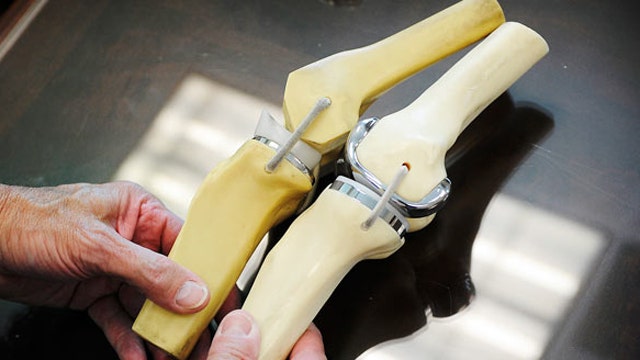On Saturday, at Rush Midwest Orthopedics, a center renowned for these types of procedures, former President George W. Bush underwent a partial replacement of his left knee, less than two months after he had a partial replacement of his right knee. Both were performed by orthopedist Richard Berger, a pioneer in the field of minimally invasive outpatient joint replacements utilizing new techniques.
[pullquote]
By Monday, Bush was on a plane back to Dallas. According to his senior spokesman, Freddy Ford, he was able to ride his mountain bike between surgeries and he anticipates being back on the bike in just a few weeks. Bush, like so many others after knee surgery, will work with his physical therapist on strengthening, flexing and extending the knee.
But as is typical with President Bush, the intended message isn’t about him at all, it’s about how his experience can help others.
There are over 700,000 total knee replacements performed in the U.S. every year, and there is evidence that the procedure is overdone.
For one thing, a total knee replacement reduces flexibility and function. It is doubtful that someone who has a total knee implant could quickly return to mountain biking.
For another thing, a total knee prosthesis may not “feel” like your own knee, whereas a partial replacement (also known as a uni-compartmental or “uni”) allows you to keep much of your original bone, ligaments and tendons.
Lastly, a study just published in the prominent British journal Lancet reveals that patients who receive a total knee replacement are four times more likely to die in the first month than those with a partial, and two to four times more likely to experience a major complication.
The knee has three compartments: medial, lateral and patella-femoral. Most partial knee replacements are performed on the medial or inside compartment, which is usually the one that is most arthritic and most likely to deteriorate to a painful “bone on bone” situation.
Partial knee replacements are evolving. Pioneers like Dr. Berger have brought the procedure to the point where it is successful in over 90 percent of patients who are chosen correctly for the procedure. Patients who are thin, in good health and physically active like President Bush are generally the best choices for this procedure, according to Dr. Laith Jazrawi, chief of sports medicine at NYU Langone Medical Center.
It is an exciting time for medical technologies, and the field of orthopedics is no exception. With new techniques, new implants and minimally invasive techniques using small incisions, more operations are becoming ambulatory and rehab stints are becoming shorter and less painful.
Patients should think carefully before having any elective surgery. But if a knee deteriorates to the point of pain and dysfunction, a partial knee replacement, performed by an experienced surgeon using minimally invasive techniques, should be part of the discussion. President Bush’s experience can serve as an example to others facing similar problems with their knees.





















